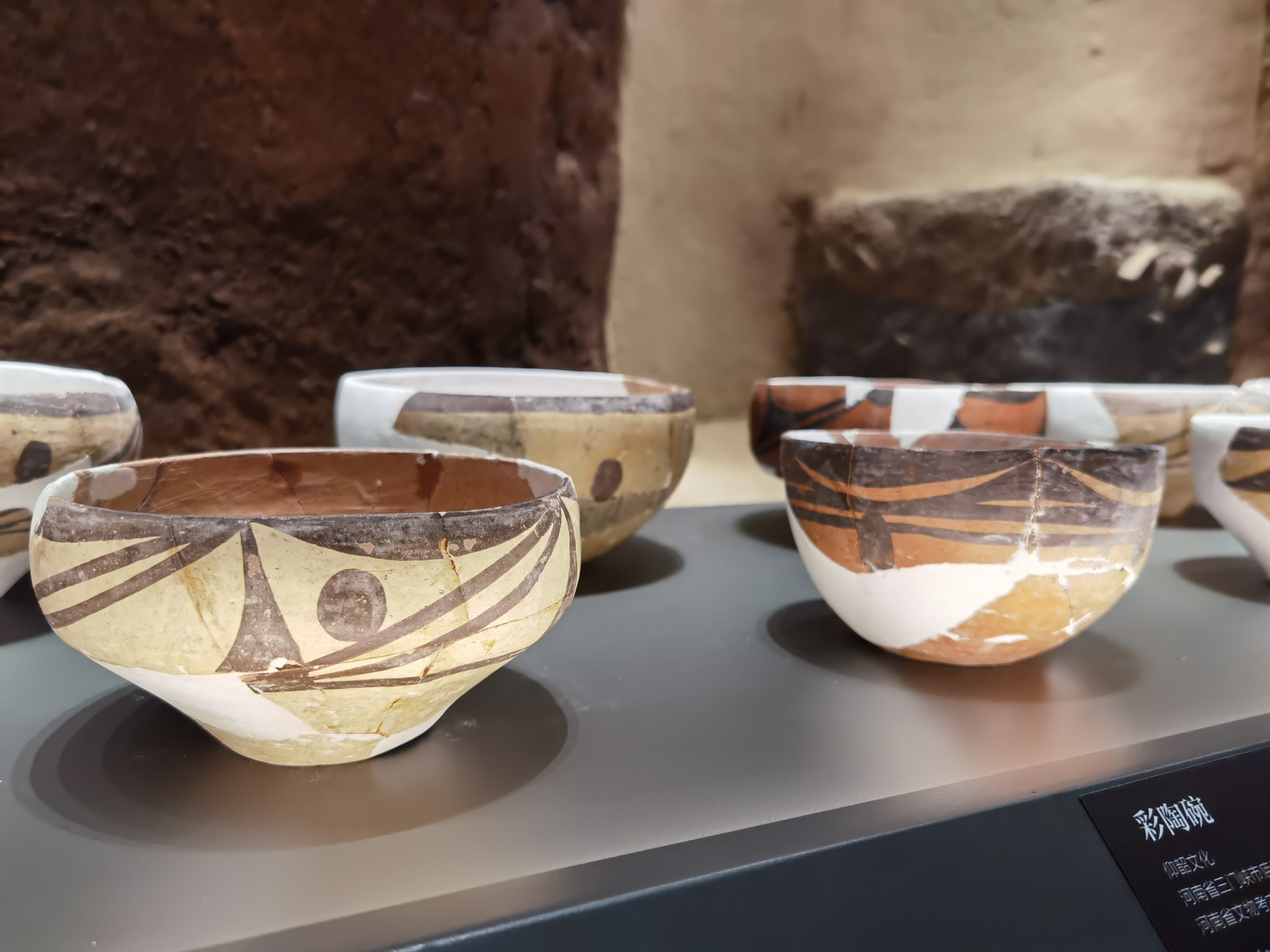A century of digging has them dancing in the ruins
THE ARTICLES ON THESE PAGES ARE PRODUCED BY CHINA DAILY, WHICH TAKES SOLE RESPONSIBILITY FOR THE CONTENTS

A village in central Henan province has been celebrating after many of China’s leading archaeologists gathered there on 17 October to mark the opening of a new venue.
Some locals in Yangshao village, Sanmenxia, may still be unaware of the area’s significance, but there were broad smiles and dancing as the Yangshao Archaeological Ruins Park was opened.
The site, more than 5,000 years old, was discovered a century ago, heralding the beginnings of modern Chinese archaeology.
Chen Xingcan, director of the Institute of Archaeology at the Chinese Academy of Social Sciences, said: “If the distribution of various prehistoric cultures in China can be compared to a flower with layers of petals, Yangshao was at the centre of the blossom.”
Johan Gunnar Andersson, a Swedish academic who was a geology consultant for the Chinese government, led the first round of excavations at 17 locations in Yangshao over 36 days from late October 1921. A Neolithic culture best recognised for its painted pottery was unearthed, astonishing academics. It was later called Yangshao culture, the country’s first named prehistoric archaeological culture.
“Yangshao was thus the start of scientific research into the Neolithic period of China,” Chen said.
This period, which in China dates back between 4,000 and 10,000 years, has contributed many of the country’s biggest archaeological findings.
Before Andersson’s findings, people had little understanding of this time. “Some people even thought that China had no Neolithic period,” Mr Chen said. “Discovery of the Yangshao village site ended such thoughts and provided great inspiration for Chinese scholars, building their confidence.”
Several milestone findings were made in various places in the country in the 1920s, including the Yinxu ruins in Henan and the Zhoukoudian site in Beijing. Both are now UNESCO World Heritage sites.
Over the past century, a comprehensive picture of Yangshao culture, dating back 5,000 to 7,000 years, has emerged across China, mainly along the upper and middle reaches of the Yellow River. Related heritage sites were found in 10 provincial-level administrative regions, scattered over more than 386,000 square miles. The border area of Henan, Shanxi and Shaanxi provinces was the core of Yangshao culture.
Wang Wei, president of the Archaeological Society of China, said: “This culture is thus the longest-lasting and widely influential type of prehistoric culture in China. Covering such a wide area, it also brought a cultural mix and created a foundation for early-stage Chinese civilisation at a pivotal time.”
Thanks to continuous excavations, more discoveries have been made.
At the Banpo site in Xi’an, Shaanxi, Yangshao culture dating back 7,000 years was unearthed. The Miaodigou site in Sanmenxia, which is 6,000 years old, reflects the peak time for this culture. Both sites were discovered in the 1950s.
One discovery at the Xipo site in Lingbao, Henan, amazed archaeologists. Architectural ruins with surrounding corridors, covering 617 square yards and including a 244-sq-yd. indoor space, were unearthed in 2002.
In Yangshao village a series of excavations restarted in August after a break of about 40 years. Newly found relics span the entire Yangshao culture period. In addition to residential compounds, roads and tombs, many artifacts have been found, including pottery, jade and items made from stone, bone, and ivory.
No matter the number of discoveries in recent years, painted pottery remains a typical symbol of Yangshao culture. This pottery, with hand-drawn patterns of smooth lines and various forms, is often seen as the first artistic wave in the prehistoric period of China.
The Miaodigou site and the area under its influence are generally considered to represent the highest-level achievements of Yangshao painted pottery, which was found as far as the middle reaches of the Yangtze River.
Li Shuicheng, an archaeology professor at Peking University, said, “During the boom time in Miaodigou, Yangshao culture entered an era of unity with vast influence, which can be seen from painted pottery unearthed elsewhere.”
Previously published on Chinadaily.com.cn
Subscribe to Independent Premium to bookmark this article
Want to bookmark your favourite articles and stories to read or reference later? Start your Independent Premium subscription today.